
Email marketing remains one of the most powerful tools in your digital marketing arsenal. While social media platforms come and go, email provides a direct line to your audience’s inbox. But here’s the challenge: your subscribers are bombarded with hundreds of emails each week. How do you create email campaigns that cut through the noise and drive real results?
This guide will walk you through the essential elements of successful email marketing campaigns, from planning your strategy to measuring your results. You’ll learn practical techniques to boost open rates, increase click-throughs, and turn subscribers into loyal customers.
Understanding your email campaign goals

Before crafting your first email, you need clarity on what you want to achieve. Email marketing can serve multiple purposes, and your approach will vary depending on your objectives.
Lead-nurturing campaigns guide prospects through your sales funnel. These emails educate subscribers about your products or services, building trust over time. A software company might send a series of emails explaining different features, sharing customer success stories, and addressing common objections.
Promotional campaigns drive immediate action. These include sales announcements, limited-time offers, and new product launches. The key is creating urgency without overwhelming your audience with constant sales pitches.
Customer retention campaigns focus on existing customers. Welcome sequences, onboarding emails, and re-engagement campaigns help maintain relationships and encourage repeat purchases.
Educational campaigns position your brand as a thought leader. By sharing valuable insights and industry knowledge, you build credibility and keep your audience engaged between promotional messages.
Building your email list the right way
Your email campaign’s success depends heavily on the quality of your subscriber list. A small list of engaged subscribers will always outperform a large list of disinterested contacts.
Create compelling lead magnets that solve specific problems for your target audience. Instead of generic offers like “Get our newsletter,” provide concrete value. A marketing agency might offer a “30-Day Social Media Content Calendar” or “Email Template Library.”
Optimize your signup forms for maximum conversions. Place them strategically on your website—in your header, footer, and within blog content. Keep forms simple, asking only for essential information initially. You can gather more details through progressive profiling over time.
Use multiple touchpoints to capture leads. Beyond website forms, consider social media campaigns, webinar registrations, and content downloads. Each touchpoint should offer genuine value in exchange for contact information.
Crafting irresistible subject lines
Your subject line determines whether your email gets opened or deleted. With the average person receiving 121 emails daily, you have seconds to grab attention.
Keep it concise and specific. Most email clients display only 30-50 characters on mobile devices. “5 ways to boost your conversion rate” works better than “Some interesting tips about improving your website performance.”
Create curiosity without being clickbait. Your subject line should hint at the value inside without revealing everything. “The mistake 90% of marketers make” sparks interest while remaining relevant to your content.
Personalize when possible. Including the subscriber’s name or company can increase open rates. However, avoid over-personalization that feels creepy or fake.
Test different approaches. Try questions, numbers, urgency, and benefits-focused subject lines. A/B testing reveals what resonates with your specific audience.
Writing compelling email content
Once subscribers open your email, you need to deliver on your subject line’s promise while guiding them toward your desired action.
Start with a strong opening. Your first sentence should hook readers immediately. Instead of “We hope you’re doing well,” try “You’re making this common pricing mistake” or “Here’s what happened when we tested our checkout process.”
Focus on one primary goal per email. Whether you want subscribers to read a blog post, download a resource, or make a purchase, make that action clear and prominent. Multiple calls to action confuse readers and reduce conversion rates.
Write conversationally. Email feels personal, so adopt a friendly, approachable tone. Use contractions, ask questions, and write as if you’re talking to a friend. This builds connection and trust.
Include social proof. Customer testimonials, usage statistics, and case studies add credibility to your messages. “Over 1,000 businesses have increased their revenue by 25% using our system” is more persuasive than generic benefit claims.
Designing for engagement
Visual design affects how subscribers perceive and interact with your emails. Poor design can undermine even the best content.
Prioritize mobile optimization. Over 60% of emails are opened on mobile devices. Use responsive design templates, large buttons, and readable fonts. Test your emails on different devices and email clients.
Create a clear visual hierarchy. Use headers, bullet points, and white space to make your content scannable. Most subscribers skim emails rather than reading every word.
Include compelling visuals. Relevant images, GIFs, and videos can increase engagement rates. However, don’t rely solely on images—some email clients block them by default.
Make your call-to-action buttons stand out. Use contrasting colors, actionable text, and adequate spacing. “Download your free guide” performs better than generic “Click here” buttons.
Timing and frequency strategies
When and how often you send emails significantly impact your campaign performance. There’s no universal best time, but data can guide your decisions.
Analyze your audience behavior. Most email marketing platforms provide insights into when your subscribers are most active. B2B companies often see better results during weekday mornings, while B2C brands might perform better on weekends.
Test different sending times. Try Tuesday through Thursday mornings, which historically show higher open rates. However, less competitive times like Saturday mornings might work for your specific audience.
Find your optimal frequency. Some businesses succeed with daily emails, while others perform better with weekly or monthly campaigns. Monitor unsubscribe rates and engagement metrics to find your sweet spot.
Segment by engagement level. Send frequent emails to highly engaged subscribers while reducing frequency for less active segments. This approach maintains relationships without overwhelming disinterested subscribers.
Measuring and optimizing performance

Successful email marketing requires continuous measurement and improvement. Track key metrics that align with your campaign goals.
Open rates indicate subject line effectiveness and sender reputation. Industry averages range from 15-25%, but focus on your own trends rather than industry benchmarks.
Click-through rates measure content engagement and call-to-action effectiveness. Low click-through rates might indicate misaligned content or weak offers.
Conversion rates show how many subscribers take your desired action. This metric connects email performance to business results.
List growth rate helps you understand whether you’re attracting new subscribers faster than you’re losing existing ones.
Use these insights to refine your approach. If open rates are low, experiment with different subject lines. Poor click-through rates might require stronger calls-to-action or more relevant content.
Turning insights into action
Email marketing campaigns succeed when you combine strategic planning with consistent execution. Start by defining clear goals, then build your campaigns around providing genuine value to subscribers.
Remember that effective email marketing is a marathon, not a sprint. Focus on building relationships and trust over time rather than pushing for immediate sales. Your subscribers will respond with higher engagement and loyalty.
Begin implementing these strategies with your next email campaign. Test different approaches, measure results, and refine your process based on what works for your specific audience. With patience and persistence, you’ll build an email marketing system that drives consistent results for your business.


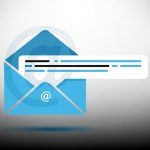
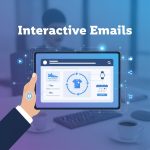



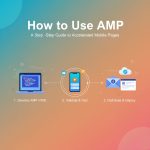






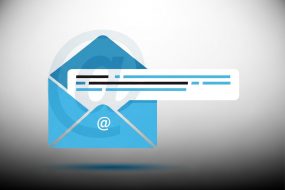
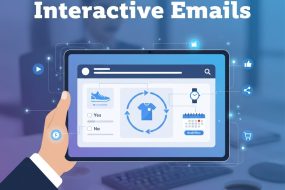


No Comments